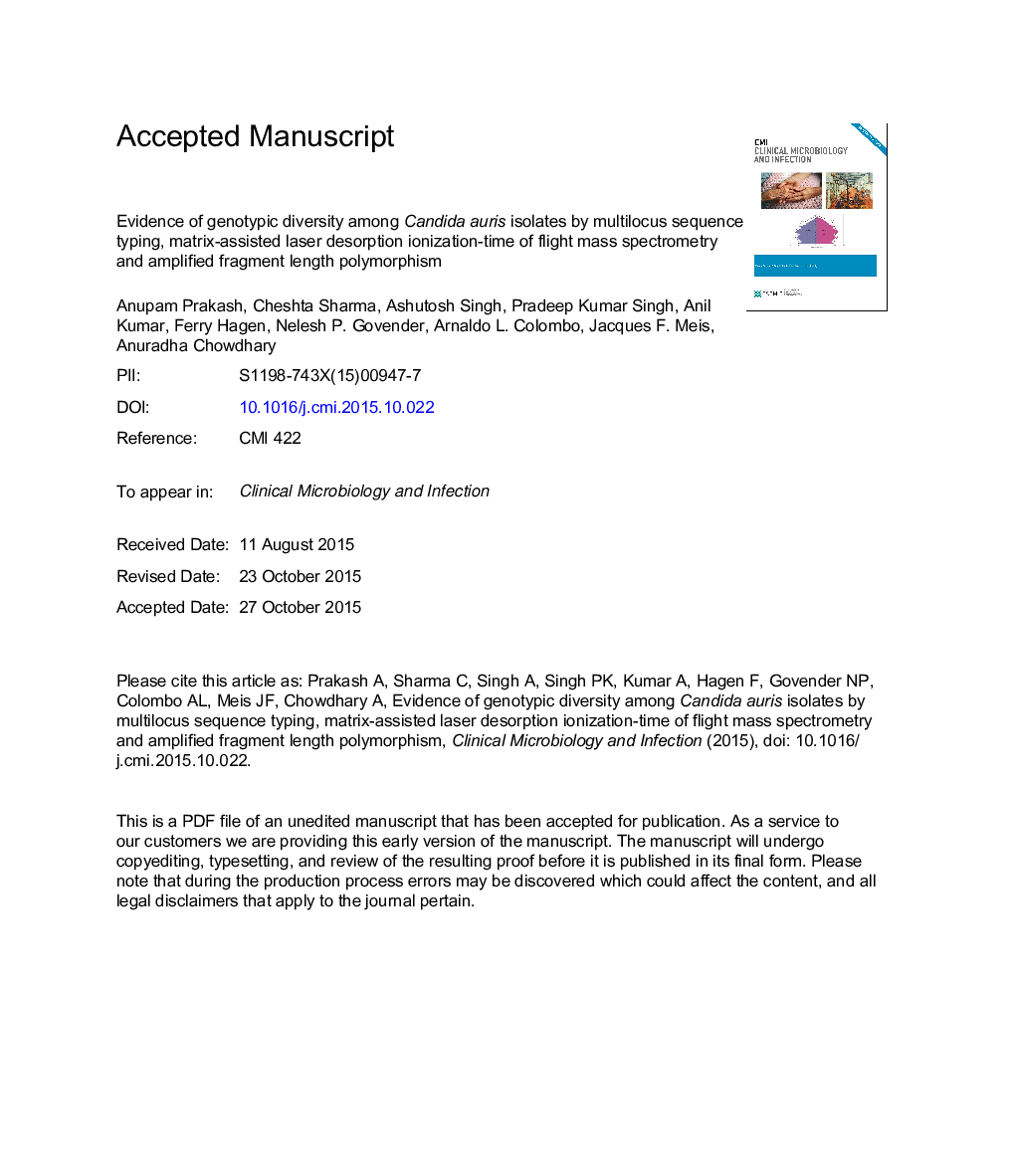| Article ID | Journal | Published Year | Pages | File Type |
|---|---|---|---|---|
| 6128983 | Clinical Microbiology and Infection | 2016 | 29 Pages |
Abstract
Candida auris is a multidrug-resistant nosocomial bloodstream pathogen that has been reported from Asian countries and South Africa. Herein, we studied the population structure and genetic relatedness among 104 global C. auris isolates from India, South Africa and Brazil using multilocus sequence typing (MLST), amplified fragment length polymorphism (AFLP) fingerprinting and matrix-assisted laser desorption ionization time-of-flight mass spectrometry (MALDI-TOF MS). RPB1, RPB2 and internal transcribed spacer (ITS) and D1/D2 regions of the ribosomal DNA were sequenced for MLST. Further, genetic variation and proteomic assessment was carried out using AFLP and MALDI-TOF MS, respectively. Both MLST and AFLP typing clearly demarcated two major clusters comprising Indian and Brazilian isolates. However, the South African isolates were randomly distributed, suggesting different genotypes. MALDI-TOF MS spectral profiling also revealed evidence of geographical clustering but did not correlate fully with the genotyping methods. Notably, overall the population structure of C. auris showed evidence of geographical clustering by all the three techniques analysed. Antifungal susceptibility testing by the CLSI microbroth dilution method revealed that fluconazole had limited activity against 87% of isolates (MIC90, 64 mg/L). Also, MIC90 of AMB was 4 mg/L. Candida auris is emerging as an important yeast pathogen globally and requires reproducible laboratory methods for identification and typing. Evaluation of MALDI-TOF MS as a typing method for this yeast is warranted.
Keywords
Related Topics
Life Sciences
Immunology and Microbiology
Microbiology
Authors
A. Prakash, C. Sharma, A. Singh, P. Kumar Singh, A. Kumar, F. Hagen, N.P. Govender, A.L. Colombo, J.F. Meis, A. Chowdhary,
